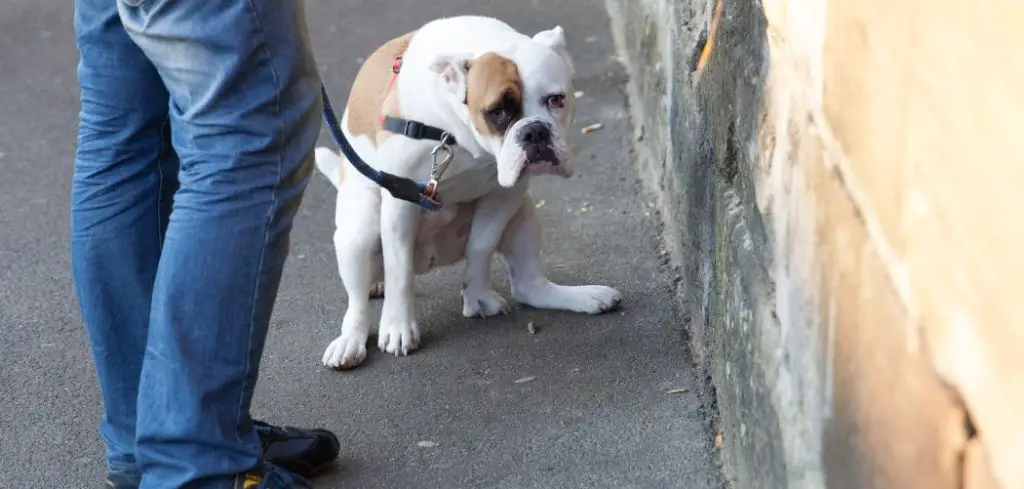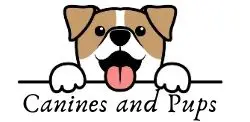Dog diarrhea is defined as frequent, loose, or watery stools. It can occur as a result of gastrointestinal upset, infections, or dietary indiscretion.
Scooting, on the other hand, refers to a behavior where a dog drags its rear end across the ground.
While it may look comical, scooting is a sign that your dog is experiencing discomfort, irritation, or itchiness around the anal area.
If your dog has diarrhea and is also scooting across the floor, it can be both concerning and frustrating.
We outline the possible causes of dog diarrhea and scooting, what these symptoms might mean, what to watch out for, and when to see your vet.
Table of Contents
Dog Diarrhea and Scooting: What It Means
Dog diarrhea and scooting often occur together due to irritation or inflammation in the digestive or anal region.
Diarrhea can cause frequent bowel movements that irritate the anal glands, while scooting—when a dog drags its rear along the ground—is usually a sign of discomfort, often caused by full, infected, or impacted anal glands, parasites, or gastrointestinal upset.
When a dog experiences diarrhea, the soft stool may not exert enough pressure to naturally empty the anal sacs, leading to discomfort and the need to scoot.
Additionally, intestinal parasites like tapeworms or allergies causing gastrointestinal distress can also trigger both symptoms.

What Causes Dog Diarrhea and Scooting?
A dog experiencing both diarrhea and scooting may be suffering from one of several underlying issues.
These symptoms can arise individually or in combination due to the following conditions:
1. Anal Gland Problems
One of the most common causes of scooting in dogs is impacted or infected anal glands.
Dogs have two small glands located near the anus that produce a scent-marking fluid. Normally, these glands empty during defecation.
However, diarrhea in dogs can prevent normal gland expression, causing a backup.
When anal glands become full, inflamed, or infected, your dog may start scooting to relieve the discomfort.
The irritation may be accompanied by redness, swelling, a foul smell, or even pus if there’s an abscess.
If your dog has diarrhea and is scooting frequently, anal gland expression by a veterinarian may be necessary.
Related: Dog diarrhea and breathing heavy (Explained)
2. Parasitic Infections
Another major reason for dog diarrhea and scooting is intestinal parasites.
Worms like tapeworms, hookworms, and whipworms can cause digestive upset and irritation around the rectal area.
Tapeworms, in particular, are known to cause itching near the anus because the worm segments can exit the body and cling to the fur.
This causes the scooting behavior, often alongside diarrhea.
Routine deworming and fecal testing are essential to diagnose and treat parasitic causes of diarrhea and scooting in dogs.
3. Food Allergies or Intolerance
Food allergies or intolerances can also lead to gastrointestinal inflammation, resulting in diarrhea and anal irritation.
Some ingredients—such as dairy, beef, chicken, soy, or grains—may trigger an allergic reaction in sensitive dogs.
This chronic irritation can not only cause loose stools but also inflammation around the anus, prompting your dog to scoot due to the discomfort.
If you notice your dog scooting shortly after episodes of diarrhea and eating specific foods, it might be worth exploring an elimination diet under veterinary guidance.
Related: Dog diarrhea and body aches (Explained)
4. Fecal Residue and Poor Hygiene
When your dog has diarrhea, the watery stool can stick to the fur around the anus, especially in long-haired breeds.
This fecal residue can cause itchiness, leading your dog to scoot in an attempt to clean the area.
Keeping the perianal area clean and trimmed, especially during bouts of diarrhea, can prevent scooting caused by hygiene-related irritation.
5. Inflammatory Bowel Disease (IBD)
Chronic cases of dog diarrhea and scooting can be signs of a more complex condition such as inflammatory bowel disease.
IBD occurs when the dog’s immune system overreacts to normal bacteria or food in the intestines, causing inflammation.
This inflammation can result in persistent diarrhea, weight loss, and discomfort in the lower bowel and rectal area.
The discomfort may manifest as scooting, licking, or biting at the rear.
Diagnosis of IBD typically requires diagnostic imaging and intestinal biopsies, and treatment often involves a special diet and medication.
6. Rectal Prolapse or Irritation
In some cases, repeated episodes of severe diarrhea can lead to rectal irritation or even rectal prolapse, where a portion of the rectal tissue protrudes through the anus.
This can be painful and trigger scooting behavior as your dog tries to relieve the discomfort.
Although rare, rectal prolapse is a veterinary emergency and must be addressed promptly.
Related: Dog diarrhea and leg pain (Explained)
Common Signs That Accompany Dog Diarrhea and Scooting
Besides loose stools and dragging their rear across the floor, other symptoms to watch for include:
Excessive licking or biting at the anal area
Swollen or red anus
Foul odor from the rear end
Worms or white segments near the stool or anus
Mucus or blood in diarrhea
Straining to defecate
Loss of appetite
Lethargy
If any of these symptoms appear alongside dog diarrhea and scooting, it’s best to seek veterinary evaluation right away.
How to Help a Dog With Diarrhea and Scooting
1. Seek Veterinary Diagnosis
The first step in addressing dog diarrhea and scooting is to visit your veterinarian.
They may perform a physical examination, anal gland expression, fecal tests for parasites, and possibly blood work to rule out infections or systemic illness.
Identifying the root cause is essential for effective treatment and to prevent complications such as dehydration, secondary infections, or chronic discomfort.
2. Hydration and Bland Diet
If your dog has mild diarrhea and is otherwise acting normal, offering a bland diet—like boiled chicken and white rice—for 24–48 hours may help stabilize digestion.
Always ensure your dog has access to fresh water to avoid dehydration.
Do not fast your dog or medicate without professional guidance, especially if scooting continues or other symptoms worsen.
3. Clean the Rear Area
Proper hygiene is essential, especially when diarrhea leads to fecal residue.
Gently clean the area with unscented baby wipes or warm water.
Long-haired dogs may benefit from a sanitary trim to keep the anal area clean.
This can help reduce scooting caused by irritation and itchiness from dried fecal matter.
4. Regular Anal Gland Expression
If your dog has frequent anal gland issues, your vet may recommend routine gland expression.
Some dogs require monthly cleanings, while others may never need it.
Understanding your dog’s specific needs can prevent both scooting and complications like abscesses.
5. Parasite Control
Ensure your dog is up to date on their parasite prevention schedule.
Regular deworming and fecal checks help prevent parasite-related diarrhea and scooting.
Flea control is also important, especially for tapeworm prevention.
6. Dietary Management
If your vet suspects a food allergy or intolerance, switching to a limited ingredient or hypoallergenic diet may be recommended.
Keep a food diary to track symptoms and avoid sudden changes in your dog’s meals, which can upset digestion and trigger scooting.
When to See the Vet Immediately
While mild diarrhea or occasional scooting can resolve on their own, certain signs demand immediate medical attention:
Blood in stool
Severe or persistent diarrhea (more than 24–48 hours)
Vomiting along with diarrhea
Visible worms or tapeworm segments
Prolonged or violent scooting
Swelling, pus, or bleeding from the anus
Signs of pain, fever, or lethargy
These symptoms could signal a more serious issue requiring immediate intervention.
Key Takeaway: Dog Diarrhea and Scooting
Dog diarrhea and scooting are symptoms that may seem minor but often point to discomfort or more serious underlying conditions.
Whether it’s due to anal gland problems, parasites, dietary issues, or inflammation, recognizing these signs early is critical to keeping your dog healthy.
Monitor your dog closely, maintain proper hygiene, ensure parasite control, and consult with your veterinarian when in doubt.
Prompt care and the right treatment plan can bring your dog relief—and keep them off your carpet!
